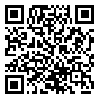Volume 15, Issue 4 (Volume 15, No 4 2025)
jdc 2025, 15(4): 292-308 |
Back to browse issues page
Download citation:
BibTeX | RIS | EndNote | Medlars | ProCite | Reference Manager | RefWorks
Send citation to:



BibTeX | RIS | EndNote | Medlars | ProCite | Reference Manager | RefWorks
Send citation to:
Araghi M, Oushyani Roudsari Z, Naghavi M. The role of inflammation in wound healing and pathological scarring; a glance to the function of macrophages. jdc 2025; 15 (4) :292-308
URL: http://jdc.tums.ac.ir/article-1-5762-en.html
URL: http://jdc.tums.ac.ir/article-1-5762-en.html
1- Department of Pathology, School of Medicine, Zanjan University of Medical Sciences, Zanjan, Iran * Zanjan Metabolic Diseases Research Center, Zanjan University of Medical Sciences, Zanjan, Iran , mahmoodaraghi48@gmail.com
2- Department of Medical Biotechnology, School of Medicine, Zanjan University of Medical Sciences, Zanjan, Iran
3- Department of Pathology, Ayatollah Mousavi Hospital, School of Medicine, Zanjan University of Medical Sciences, Zanjan, Iran
2- Department of Medical Biotechnology, School of Medicine, Zanjan University of Medical Sciences, Zanjan, Iran
3- Department of Pathology, Ayatollah Mousavi Hospital, School of Medicine, Zanjan University of Medical Sciences, Zanjan, Iran
Abstract: (100 Views)
Impaired wound healing following significant tissue damage such as severe burns, trauma, or surgery can result in scarring and skin fibrosis. Pathological scarring leads to changes in the natural shape of the wound and, in addition to cosmetic problems, may be accompanied by pain and even limit the person's normal movement. The immune response plays a very important role in the wound healing process. Activation of immune cells and factors initiates the inflammatory process, facilitates wound cleansing, and tissue repair and regeneration. However, disruption of the immune system during the wound healing process leads to persistent inflammation and delayed healing, ultimately leading to the development of chronic wounds. The microenvironment of a chronic wound contains a large number of immune cells, including proinflammatory macrophages, and high expression of inflammatory mediators such as TNF-α and IL-1β is observed in it. Among them, macrophages, as innate immune cells, play a key role in promoting the immune response and activating adaptive immunity. These cells are also key factors in the transition from the inflammatory phase to the tissue repair phase. As a result, dysregulation of macrophage function will have consequences such as scarring. Therefore, knowledge of the exact mechanism of the inflammatory process during wound healing, the inflammatory and anti-inflammatory mediators produced, and the effect of macrophages on this process can promise the achievement of new strategies in scarless wound healing. Therefore, this article discusses the mechanism of the immune system during the inflammatory process, and the key role of macrophages in this process, as well as scar formation.
Type of Study: Review |
Subject:
General
Received: 2025/04/4 | Accepted: 2026/02/4 | Published: 2026/02/4
Received: 2025/04/4 | Accepted: 2026/02/4 | Published: 2026/02/4
Send email to the article author
| Rights and permissions | |
 |
This work is licensed under a Creative Commons Attribution-NonCommercial 4.0 International License. |





